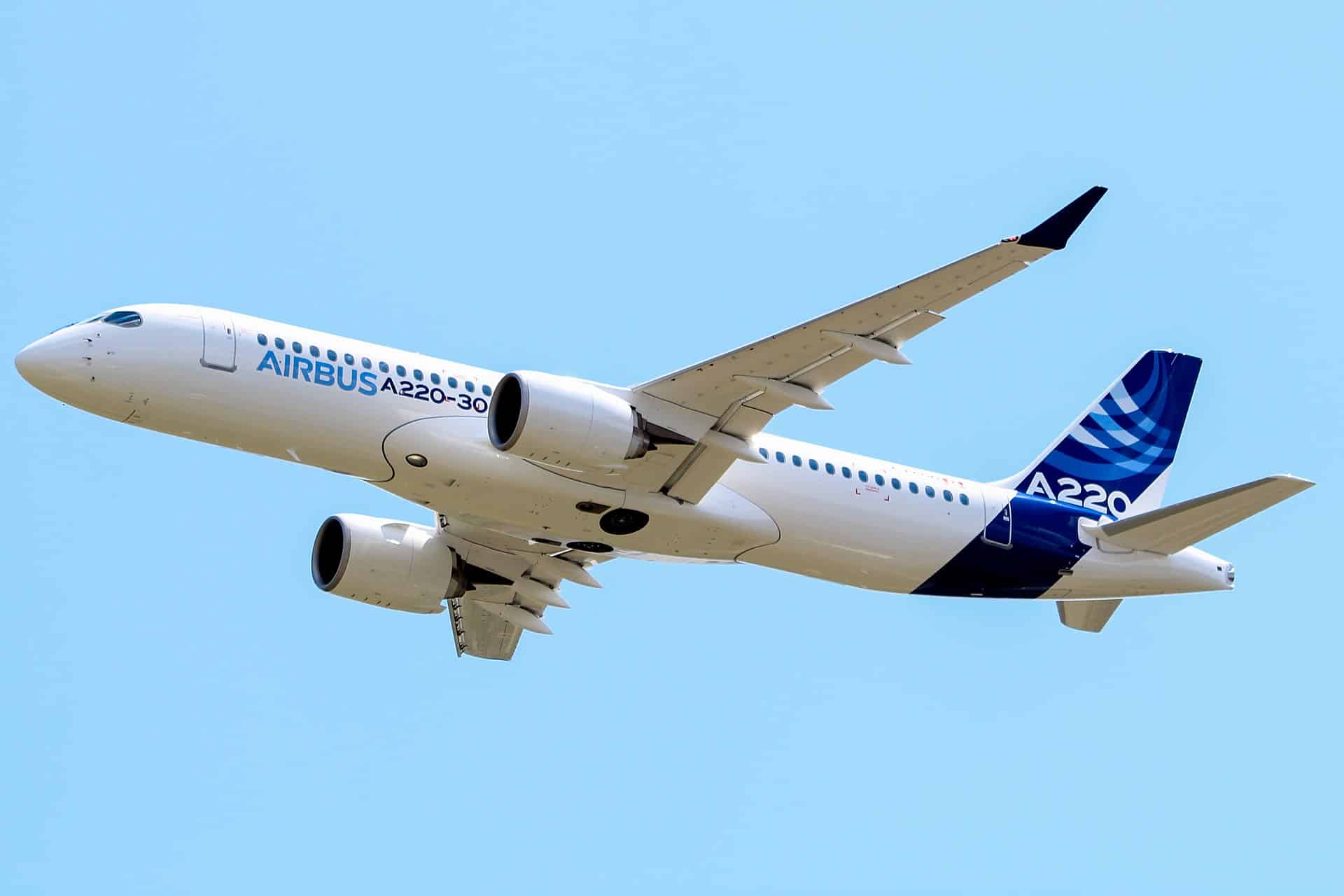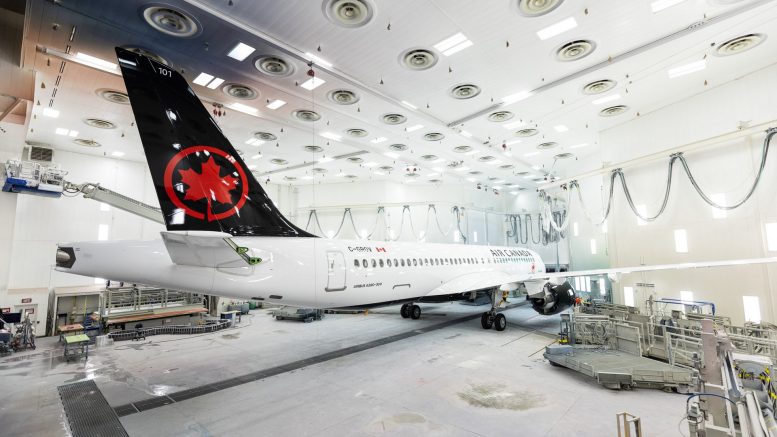Aviation News
Airbus Delays A220 Assembly Timeline Amid Ongoing Supply Chain Disruptions
Delays to Airbus’s A220 assembly schedule reflect major supply chain challenges as global parts shortages and shortages in critical materials and delayed parts deliveries force a production pushback; Airbus says the adjustment protects quality and operational consistency and aims to limit disruption across its global assembly network while signaling persistent strain on the aviation manufacturing sector.
Overview of the A220 Program
Built to serve the 100–150 seat market, the A220 program blends lightweight composites and the PW1500G geared turbofan to deliver notable fuel-efficiency gains</strong). Final assembly lines in Mirabel (Canada) and Mobile (USA) feed a growing operator base, but Airbus has pushed back a planned ramp-up this year due to supply shortages and delayed parts deliveries, a move intended to protect quality and production stability across its global assembly network.
Background of the A220 Aircraft
Originating as Bombardier’s CSeries before Airbus acquired the program and rebranded it in 2018, the A220 exists as two main variants (A220-100 and A220-300) tailored for short- to medium-haul routes. Operators such as Swiss, airBaltic and Delta adopted the type for its cabin comfort and range, while the PW1500G engine and advanced aerodynamics underpin the aircraft’s performance and operational appeal.
Importance of A220 in Airbus’s Portfolio
The A220 fills a distinct slot below the A320 family, giving Airbus an in-house option to compete in the lower-capacity single-aisle segment and to meet demand for more fuel-efficient regional operations. Strong orders from carriers and lessors make the A220 central to growth strategies, so production delays from supplier disruptions have outsized implications for delivery schedules and airline network planning.
Moreover, the A220’s role extends beyond direct sales: it supports Airbus’s market share against regional competitors and informs supply-chain scaling for next-generation single-aisles. With Airbus stressing quality control, the current schedule adjustment aims to balance ramp targets with operational consistency, while airlines adjust leases and short-term fleet plans to absorb deferred deliveries.
Current Supply Chain Challenges
Persistent shortages and uneven deliveries have left assembly lines idling and forced staggered scheduling across facilities. Suppliers are struggling to meet surging post‑pandemic demand, prompting Airbus to push back its planned A220 ramp‑up earlier this year. Management says the adjustment prioritizes quality and operational consistency, while teams reroute orders to alternate vendors to limit disruption from persistent shortages and delayed parts deliveries.
Impact of Global Parts Shortages
Shortages translate into reduced throughput on A220 lines and uneven workflow between component suppliers and final assembly. Lead‑time variability forces batch builds and increases work‑in‑progress, driving extra inspections and touch‑ups. Airlines face deferred deliveries and Airbus reports supplier backlogs in avionics, composite parts and electrical systems, producing knock‑on effects across its global assembly network.
Key Components Affected
Engine deliveries—most notably Pratt & Whitney PW1500G units—along with avionics, landing gear, composite panels and electrical harnesses are the most affected. Engine and avionics shortfalls present the largest schedule risk, while shortages of composite skins and harness assemblies complicate wing and fuselage mating sequences.
Engines require multi‑stage production and certification, creating long lead times that magnify any slip; avionics LRUs depend on certified production capacity so shifting output takes weeks. Landing gear and composite skins often originate from a small set of tier‑1 suppliers, introducing single‑source risk. Airbus is reallocating orders, adjusting build sequencing and increasing inspection throughput, but upstream bottlenecks continue to dictate overall assembly cadence.
Production Timeline Adjustments
Previous Production Goals
Before the adjustment, Airbus planned a phased ramp-up of A220 output, aiming to move production from mid-single-digit monthly rates to double-digit monthly output by late 2024 to meet growing operator demand and reduce backlog while preserving delivery cadence.
Revised Assembly Schedule
Airbus has pushed back planned increases by several months to safeguard assembly standards amid persistent shortages in raw materials and delayed parts deliveries, stressing that maintaining quality and operational consistency outweighs accelerating output at this time.

Supply disruptions have hit avionics harnesses, fuselage sections and landing-gear subassemblies, creating lead-time extensions of up to 12 weeks for some vendors; Airbus will reallocate workload between its Mirabel and Mobile final-assembly lines, add temporary inventory buffers and stagger deliveries with suppliers to limit wider network impact.
Implications for Airbus and Airlines
Production slowdowns tied to ongoing parts shortages will ripple across schedules and route planning, forcing both Airbus and carriers to adjust capacity forecasts. Suppliers missing deliveries affect final assembly timing at Mirabel and Mobile, and the need to preserve quality and operational consistency means Airbus is prioritizing reliability over speed. As a result, airlines face tightened delivery windows, potential short-term capacity gaps, and the need to rework lease returns or seasonal schedules to cover near-term aircraft shortfalls.
Effects on Deliveries and Orders
Deliveries are expected to slip by several months for some customers as backlog management takes precedence over ramp-up. Airlines holding tightly scheduled A220 slots will likely seek staggered handovers or temporary wet-leases; others may defer acceptance or renegotiate timelines. Orderbooks remain intact, but delivery timing uncertainty complicates network planning, particularly for carriers that had slated A220s to replace older narrowbodies on growth routes this year.
Potential Financial Impact
Short-term financial pressure will appear in higher working capital and potential compensation claims from affected airlines, while Airbus could see margin compression if production inefficiencies persist. Suppliers may demand accelerated payments or relief measures, increasing cash-flow volatility. Overall, the combination of higher inventory costs and postponed revenue recognition creates a measurable strain on both manufacturers and operators.
More granularly, delayed A220 handovers tie up production slots and finished-aircraft inventory, which elevates storage and financing costs and can push maintenance and certification expenses into later periods. Airlines losing planned aircraft for peak seasons may incur incremental fuel and lease costs from short-term hires, and some contracts include liquidated damages that kick in after fixed delays. For Airbus, extended disruption risks downgrading short-term delivery forecasts and could force negotiated settlements with major customers to preserve long-term relationships and order integrity.
Industry Response to Supply Chain Issues
Strategies Adopted by Manufacturers
Manufacturers have moved from optimistic ramp-ups to pragmatic rate management, with Airbus delaying A220 increases while reallocating work between Mirabel and Mobile. Many OEMs now favor dual-sourcing, higher safety stocks and modular assembly sequencing to absorb volatility. At the shop floor level, some lines operate with staggered shifts and buffer kits to avoid complete stoppages, and procurement teams are prioritizing parts with longest lead times to limit cascading delays.
Collaboration with Suppliers
Airbus and peers intensified supplier engagement through joint forecasting, shared inventory visibility and capacity payments to tier‑one partners, creating weekly syncs and supplier war‑rooms to resolve bottlenecks quickly. This approach has targeted avionics, wiring harnesses and long‑lead castings first, while logistics teams reroute shipments to keep Mirabel and Mobile lines fed during shortages.
More concretely, teams now exchange BOM‑level forecasts out to a 12‑month horizon, deploy KPI dashboards for on‑time delivery and cash‑flow support, and negotiate short‑term volume guarantees with secondary vendors; these measures have shortened some supplier lead times and prevented larger production freezes by enabling rapid part swaps and temporary capacity expansion.
Future Outlook for the A220 Program
Supply interruptions at key suppliers and delayed parts deliveries have pushed assembly milestones back by several months, affecting Mirabel and Mobile lines. Airbus is prioritizing quality and operational consistency while managing a growing delivery window, and airlines face longer wait times for roster replacements. At the same time, persistent post-pandemic demand for fuel-efficient single-aisle aircraft keeps long-term order visibility positive despite near-term schedule slips.
Expectations for Recovery
Many suppliers are scaling capacity and adding shifts, so recovery is expected to be gradual over the next 6–12 months. Constraints around avionics, structural kits and PW1500G engine components will determine the tempo, and Airbus’ decision to slow ramp-up aims to avoid quality rework that could cause deeper delays. Airlines and lessors should budget for phased deliveries and potential short-term lease extensions as inventories normalize.
Long-term Viability of the Model
The A220’s 20–25% fuel-burn advantage and optimized 100–150-seat market positioning support resilience: operators seeking lower trip costs and better range-capacity balance keep the type in demand. Continued aftermarket support and Airbus integration of supply-chain lessons will be decisive for market share retention versus larger single-aisles.
Operational case examples—carriers in North America and Europe already deploying the A220—underline strong real-world economics that boost residual values and lease demand. Airbus’ measured production approach, combined with supplier consolidation and targeted inventory buffers, should protect long-term program health even if near-term delivery cadences remain uneven.
Summing up
The Airbus delay to the A220 assembly schedule reflects ongoing global parts shortages that have constrained ramp-up plans; the company is prioritizing quality and operational consistency while suppliers work to catch up, and the adjustment highlights sustained pressures across the aviation manufacturing supply chain with implications for delivery timelines and network coordination.
Frequently Asked Questions — Airbus A220 Assembly Delay
Why did Airbus delay A220 assembly?Airbus delayed A220 assembly due to ongoing global supply chain disruptions impacting key components such as avionics, fuselage parts, and engine deliveries.
Which facilities are affected by the A220 delay?The delay primarily affects Airbus assembly sites in Mirabel, Canada, and Mobile, Alabama, where A220 final assembly takes place for North American and international operators.
How long will the A220 assembly delay last?Airbus has not provided a specific duration for the delay, though industry analysts expect schedule adjustments to continue through mid-2026 as part shortages persist.
Will the delay impact airline deliveries?Yes, some airlines expecting A220 deliveries in 2025–2026 may face postponements. Airbus is working closely with suppliers and operators to minimize delivery disruptions.


